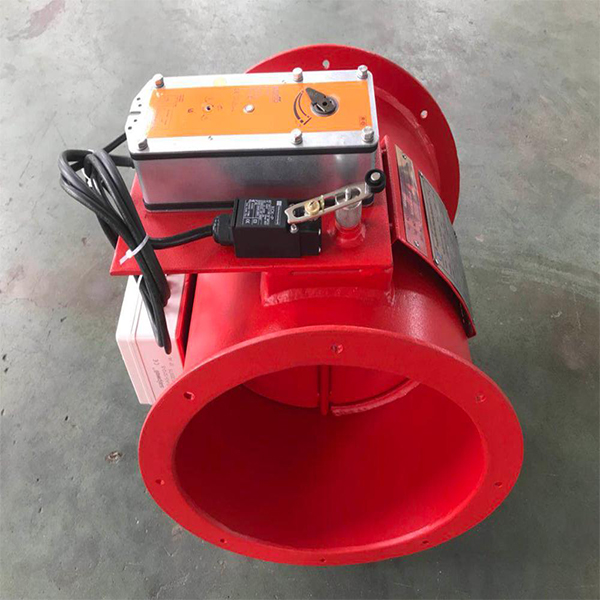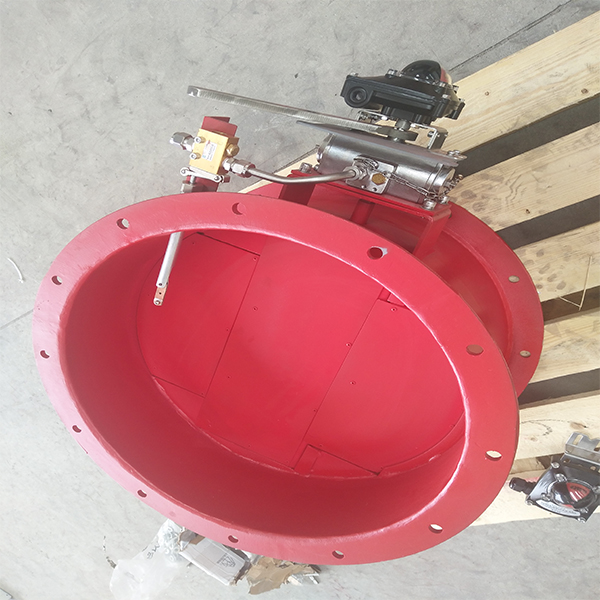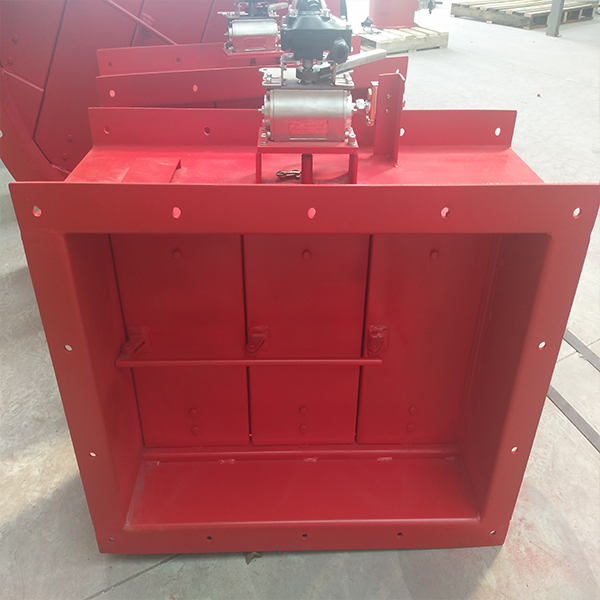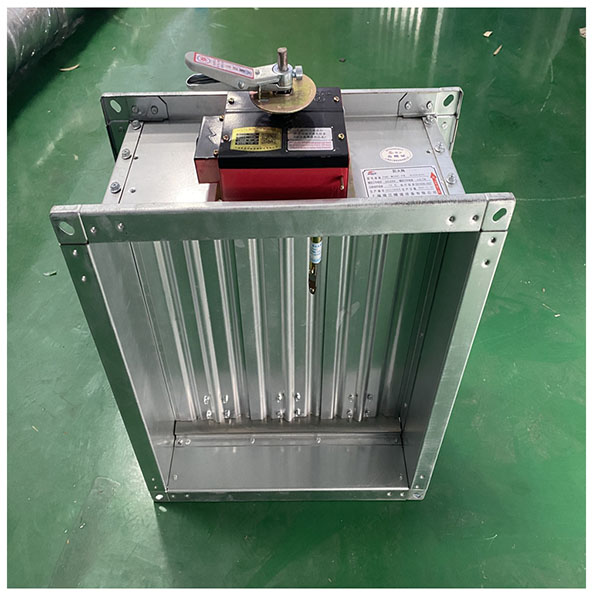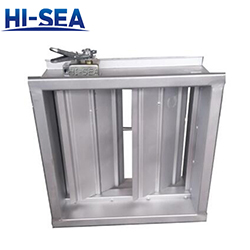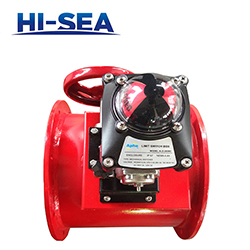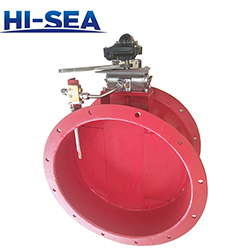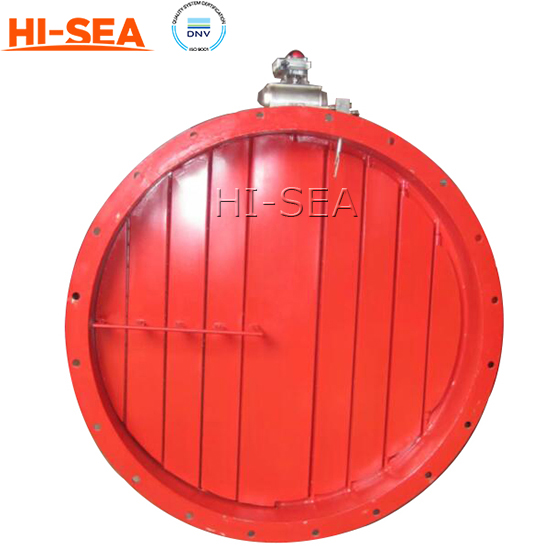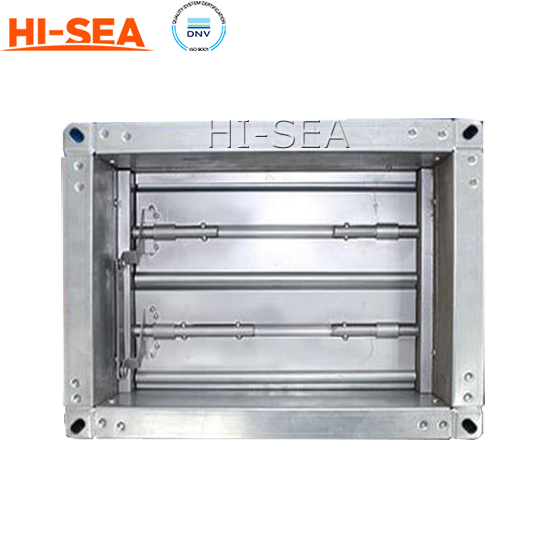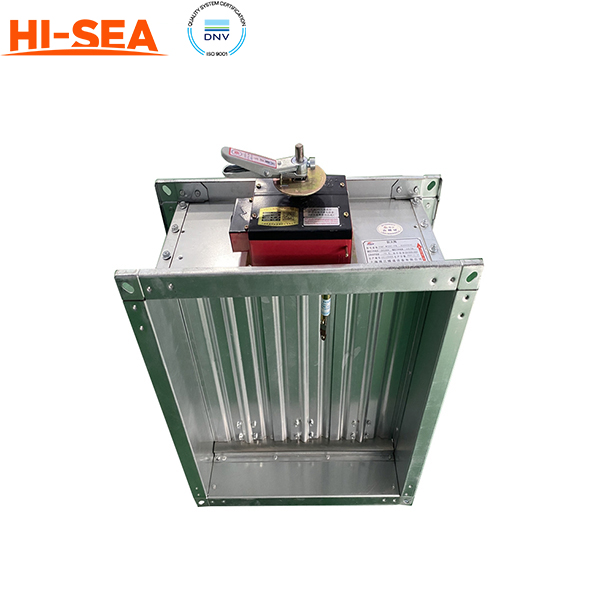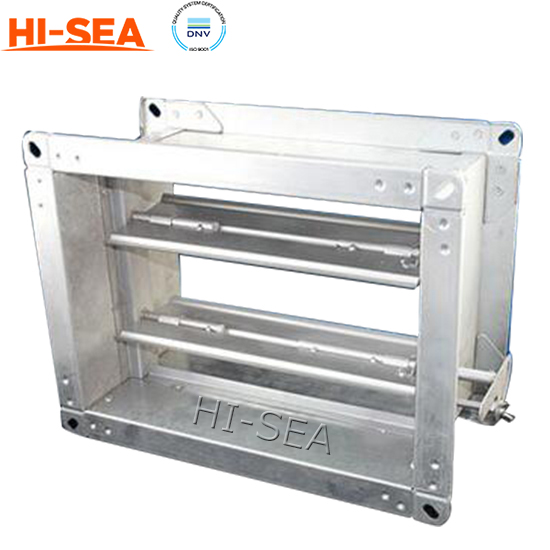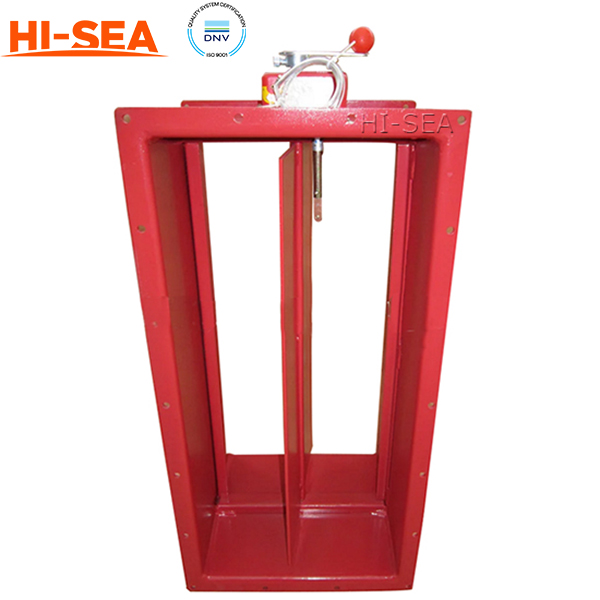MARINE & OFFSHORE EQUIPMENT
- Dredging Equipment
- Marine Deck Machinery
-
Marine Mooring Equipment
-
Marine Anchor
- AC-14 HHP Anchor
- Admiralty Anchor
- Beldt Stockless Anchor
- Bruce Anchor
- Spek Anchor
- Danforth HHP Anchor
- Delta High Holding Power Anchor
- GB11579-89 Light Weight Anchor
- Hall Anchor
- High Holding Power Mastrosov Anchor
- Hot Dip Galvanized Anchor
- Japan Stock Anchor
- JIS Stockless Anchor
- Pool Anchor
- Single Fluke Anchor
- Stainless Steel Anchor
- Stevpris MK5 Anchor
- Stingray Anchor
- US Navy Stockless Anchor
-
Marine Anchor Chain
-
Marine Shackle
- Kenter Shackle
- D Type Joining Shackle
- Pear Shaped Shackle
- Anchor Swivel Shackle Type A
- Anchor Swivel Shackle Type B
- Buoy Shackle Type A
- Buoy Shackle Type B
- C Type Detachable Connecting Link
- D Shackle
- Forelock Shackle
- Anchor Chain Swivel Group
- Straight Shackle
- Anchor Shackle
- Marine Triangle Plate
- Anchor Chain Swivel
- Anchor Chain Joining Shackle
- Anchor Chain End Shackle
- Slim Kenter Shackle
-
Chain Chaser
-
Marine Bollard
-
Marine Chock
-
Marine Fairlead
-
Marine Chain Stopper
-
Marine Mooring Reel
-
Marine Towing Bracket
-
Mooring Rope
-
Marine Towing Hook
-
Marine Shark Jaw
- Marine Fender
-
Marine Buoy
- Marine Floating Pontoon Dock
-
Marine Anchor
- Aquaculture Equipment
- Marine Outfitting Equipment
- Marine Propulsion System
-
Marine Painting
-
Marine Auxiliary Machinery
- Marine Air Compressor
- Marine Air Receiver
- Marine Sewage Treatment Plant
-
Marine Diesel Generator Set
- Marine Oil Water Separator
- Ballast Water Management System
- Marine Hydrophore
- Marine Calorifier
- Seawater Desalination Plant
-
Marine Oil Separator
- Marine Fuel Oil Supply Unit
- Marine Heat Exchanger
-
Marine Hot Well Unit
-
Marine Incinerator
-
Marine Boiler
-
Marine Valve
- JIS Marine Valve
- DIN Marine Valve
- ANSI Marine Valve
- GB Marine Valve
- CB Marine Valve
- CBM Marine Valve
-
Marine Gate Valve
-
Marine Globe Valve
-
Marine Angle Globe Valve
-
Marine SDNR Valve
-
Marine Angle SDNR Valve
-
Marine Check Valve
-
Marine Storm Valve
-
Marine Butterfly Valve
-
Marine Quick Closing Valve
-
Marine Fire Valve
-
Marine Self Closing Valve
- Marine Valve Accessories
-
Marine Pump
- Marine Centrifugal Pump
- Marine Screw Pump
-
Marine Gear Pump
-
Marine Vortex Pump
-
Marine Ejector Pump
-
Marine Diaphragm Pump
-
Marine Piston Pump
-
Marine Fire Pump
-
Marine Emergency Fire Pump
-
Marine External Fire Pump
-
Marine Ballast Water Pump
-
Marine Fuel Pump
-
Marine Lubricating Oil Pump
-
Marine Bilge Pump
-
Marine Sewage Pump
-
Marine Domestic Water Pump
-
Marine General Pump
-
Marine Cargo Oil Pump
-
Marine Hand Pump
- Marine Pump Parts
- Marine Life-saving Equipment
- Fire-fighting Equipment
- Marine Cable
- Marine Electrical Equipment
- Marine HVAC
-
Labour Protection Appliance
- Marine Decorative Material
-
Marine Anode
- Marine Pipe Fitting & Flange
- Marine Instrument
- Ship Building Equipment
INDUSTRY EQUIPMENT
- Hoisting Equipment
- Welding Machine & Material
-
Cutting Machine
- Container Securing Fitting
- Link Chain
- Container & Storage Equipment
-
Diesel Generator Set
- Other Equipment and Tools
- Petrochemical Equipment
- Fiber Reinforced Plastics
- Polymer Materials
- Environmental Protection Series
- Geo-products and Building Materials
- Metal Mesh
- Steel Grating
-
Earthwork Teeth
-
Turnbuckle
STOCK LIST
Contacts
 Tel:+86-23-67956606
Tel:+86-23-67956606
 FAX:+86-23-67956622
FAX:+86-23-67956622
 Email:manager@cqhisea.com
Email:manager@cqhisea.com
Working Time: 9:00--17:00
Working Day: Monday to Friday Website: www.cqhisea.com

Marine Fire Damper
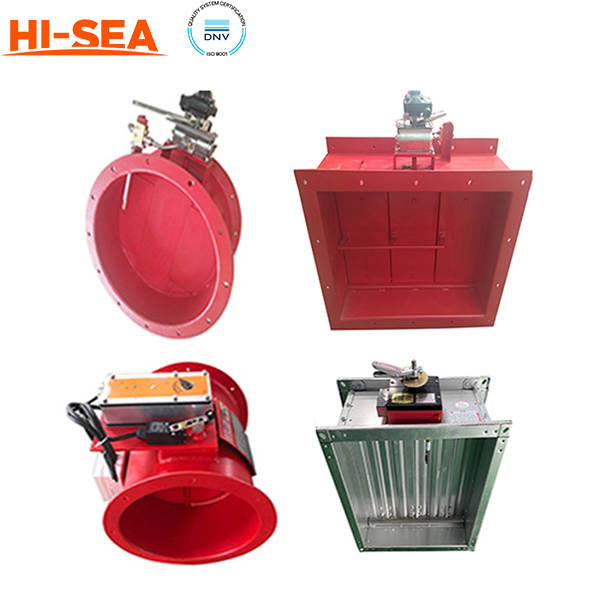
Marine Fire Damper
Introduction
Marine fire damper is a safety device installed in ventilation systems on ships and other marine vessels to prevent the spread of fire and smoke in the event of a fire. The damper is designed to close automatically in the event of a fire, sealing off the ventilation duct and preventing the spread of flames and smoke to other parts of the ship.
Fire dampers are typically installed in ventilation ducts that penetrate fire-resistant bulkheads and decks. When the temperature in the duct reaches a certain threshold, the damper is activated and closes automatically, preventing the spread of flames and smoke.
Marine fire dampers are an important safety feature on ships, as fires can spread quickly in enclosed spaces, making it difficult for crew members to escape or for firefighting personnel to control the blaze. By preventing the spread of fire and smoke, fire dampers help to protect the crew and the vessel from the potentially devastating effects of a fire at sea.
Product Classification
Marine Fire Damper
Product Structure of Fire Damper
The fire damper consists of Valve body, blade, actuator, temperature sensor, etc.
Configuration Options
Features
control mechanism
manual
Manual operation on site.
electric
It can be operated manually on the spot or controlled remotely.
pneumatic
It can be manually operated on-site or remotely controlled centrally. Pneumatic fire dampers are generally installed in hazardous areas.
Fire-proof level
A0
A0 grade mainly emphasizes A grade, do not use flammable materials, burn for 0 minutes, and the temperature rise on the opposite side does not exceed 130 degrees A grade fireproof.
A15
Within 15 minutes, the average temperature on the backfire side shall not be higher than the original temperature by more than 140 degrees, and the temperature at any point including the joint shall not be higher than the original temperature by more than 180 degrees.
A30
Within 30 minutes, the average temperature on the backfire side shall not be higher than the original temperature by more than 140 degrees, and the temperature at any point including the joint shall not be higher than the original temperature by more than 180 degrees.
A60
Within 60 minutes, the average temperature on the backfire side shall not be higher than the original temperature by more than 140 degrees, and the temperature at any point including the joint shall not be higher than the original temperature by more than 180 degrees.
form
round
rectangle
Explosion-proof requirements
Explosion-proof
For use in hazardous areas, containing explosive gases.
non-explosion proof
It is installed on the air duct of the ventilation and air-conditioning system with general fire protection requirements.
Specific Difference Between Us and Other Suppliers
Comparison
Other low quality supplier
Consequence
Our Factory
Consequence
The installation accuracy of the connecting rod between the baffles is not enough
As a result, when the fire damper is closed, the shutter still cannot be completely closed.
The connecting rod between the baffles is installed with high precision
When the fire damper is closed, the shutter can be fully closed.
The thickness of the damper shell does not meet the requirements
The casing is prone to breakage
The thickness selection of the damper shell The regulations of each classification society are consistent with the SLOAS requirements
The shell meets the requirements, and the damper can be used for a longer time
Air leakage does not meet the requirements
Excessive air leakage from fire dampers will cause major safety hazards
Airtight performance is selected according to requirements
The air leakage meets the requirements, and the product is safer to use
The fire rating does not meet the requirements
It is easy to leave a safety hazard
Select as required
Product use more assured, longer service life
Feature
1. Fire-resistant construction: The damper should be constructed from materials that are capable of withstanding high temperatures and preventing the spread of fire.
2. Automatic shut-off: The damper should be equipped with an automatic shut-off mechanism that will close the damper in the event of a fire.
3. Manual override: A manual override should be available to enable the damper to be closed manually in the event of an emergency.
4. Corrosion resistance: The damper should be designed to resist the effects of saltwater and other corrosive agents.
5. Easy installation: The damper should be designed for easy installation, with minimal requirements for cutting and fitting.
6. Low maintenance: The damper should require minimal maintenance, with only periodic inspection and testing necessary.
7. Compliance with regulations: The damper should comply with all relevant marine safety regulations and standards.
8. High reliability: The damper should be designed to operate reliably in harsh marine environments, with minimal risk of failure or malfunction.
9. Compact design: The damper should be designed to take up minimal space, while still providing effective fire protection.
10. Long lifespan: The damper should be designed for a long lifespan, with minimal degradation of its fire protection capabilities over time.
Application Principle
Since a fire damper is located between two fire zones, the damper must be operationally closed in any of the zones involved in order to effectively block the fire.
Any fire damper shall be fail-safe, with a second procedure to effectively shut off the fire.
This function can be achieved by means of wire melting or loss of electricity.
Installation and Operation Instruction
Shipyard should check the fire damper and ensure everything is ok before installation.
Fire damper should have a independent support to ensure the function of fire damper.
A service space of at least 350mm should be reversed for maintenance.
Manhole of at least 450mm*350mm is required when the fire damper is installed above ceiling or on duct.
No fire or welding are permitted within s scope of 3m from fire dampers, in order to ensure the temperature of sensor less than 65℃.
Fire damper should be tested during installation, and be inspected regularly after installation.
Product Maintenance
(1) Check all fire dampers and fire damper shutters on the ship regularly every week, hold a meeting to close several times manually.
Check whether the signal output is consistent with the working condition of the site, and make corresponding records.
(2) Apply some lubricating oil to the damper shutter blades at regular intervals.
(3) The solenoid valve on the site shall be checked and operated at least once a week.
Product Showing
